nhk
Latest
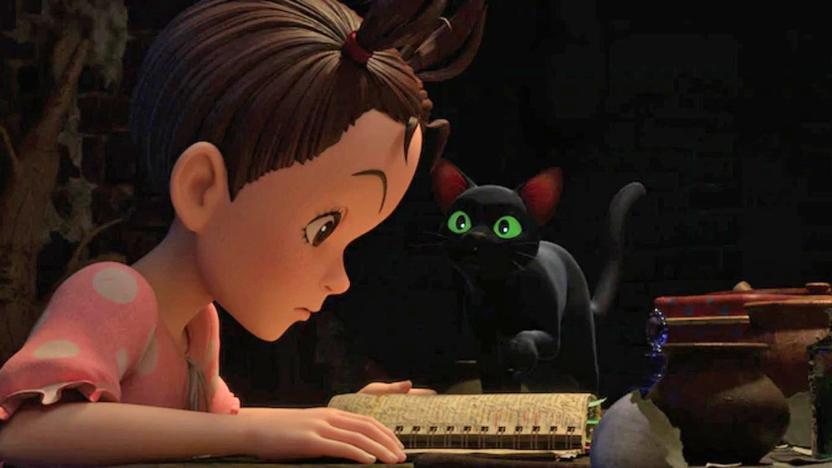
Watch the trailer for Studio Ghibli's first fully CG movie
Studio Ghibli has released the trailer for its first CG movie, 'Earwig and the Witch.'
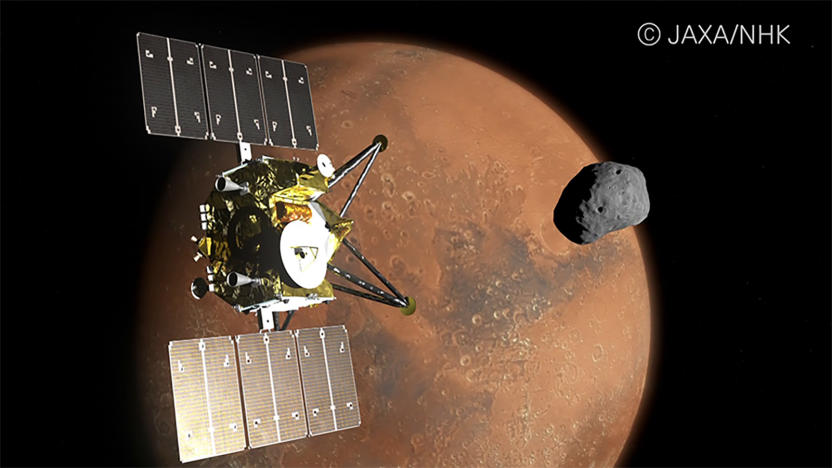
Japan will send an 8K camera to Mars and its moons
Japan's JAXA and NHK are sending an 8K camera to Mars and its moons to capture images in unprecedented detail.

Japan's public broadcaster sets its 8K schedule for the Tokyo Olympics
The Tokyo Olympic and Paralympic games are still on schedule to take place this summer, and Japan's public broadcaster has been planning for years to make sure its an 8K showcase event. If you're in Japan, 8K broadcasts with 22.2 channel audio are available to home viewers, although it's a little less clear how the rest of us can catch it in the highest level of detail available. As far as the events available, NHK says it will have both the opening and closing ceremonies in 8K, including the first live broadcast at that resolution shot from a helicopter. Specific events will also be available in 8K, including track and field competition like the 100m and 200m men's finals, women's 200m finals and the men's 400m relay final. The women's soccer and volleyball finals will also be broadcast in 8K, along with selected events from badminton, judo, table tennis and swimming. A few weeks later in late August, the ceremonies for the Paralympics will also air in 8K, along with events like wheelchair rugby, swimming and track and field. Wherever 8K viewing is available it seems likely we'll get a similar set of things to watch, so stay tuned for any details from NBC or well-connected event spaces that can put a Super Hi-Vision broadcast on the big screen. I've seen an 8K broadcast from the 2012 Olympics in London streamed over Internet2, and it was a one-of-a-kind experience. In 2016 NBC streamed 4K video from Rio that was downconverted from NHK's 8K capture, but with 8K TVs on shelves and more bandwidth to go around maybe you'll get a chance to see it in your living room.

Sharp's 8K satellite receiver is ready for broadcasts to start in Japan
As we learned during IFA last month, the 8K hype train is here whether we're ready or not. In Japan everything is timed to coincide with the 2020 Summer Olympic Games in Tokyo, and as such broadcaster NHK is planning to kick off hybrid 4K/8K broadcasts beginning December 1st. Assuming you have access to an 8K TV or projector, you'll need a box to actually catch and process the Super Hi-Vision video signal, and fortunately Sharp has one ready to connect to its 8K TV that has been on sale since 2017.
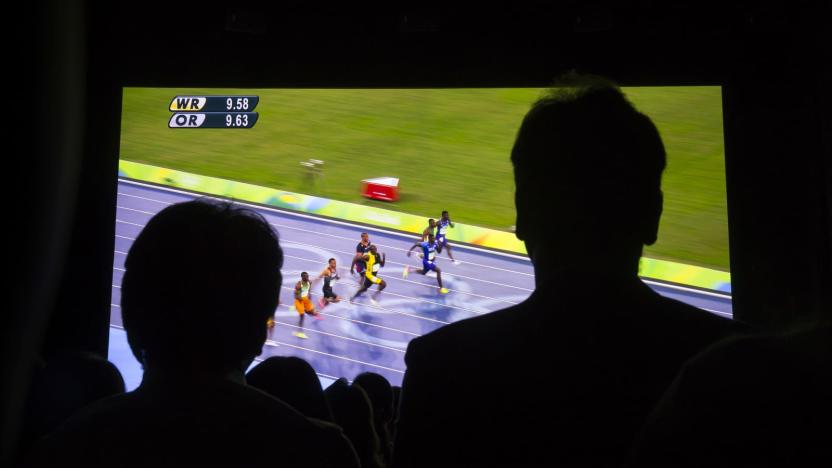
NHK is ready to shoot slow motion 8K video
TV broadcasters are still wrapping their heads around 8K, but that isn't stopping NHK from pushing the technology forward. The Japanese industry giant is coming to the annual NAB trade show with a slew of 8K inventions, headlined by a high-speed camera. It's not exactly portable, but it can shoot 240 frames per second -- ideal for slow motion sports footage or reduced motion blur at full speed. Appropriately, there's dedicated hardware for stretching out playback at the extra-high resolution.

The first 8K satellite TV broadcasts are live in Japan
Just as we were getting used to Ultra HD 4K, Japan's NHK has kicked off its Super Hi-Vision broadcast tests, sending out 4K and 8K video via satellite. Unfortunately, there's no way to watch the super high res feeds and 22.2 channel sound at home -- even with a $130,000 8K TV -- but interested Japanese residents can check out tests of the feeds at several public locations in Tokyo and Osaka. NHK is using the Rio Olympics as a testbed for technology that it hopes to roll out first in 2018, and have ready for the public time for the 2020 Olympics in Japan.
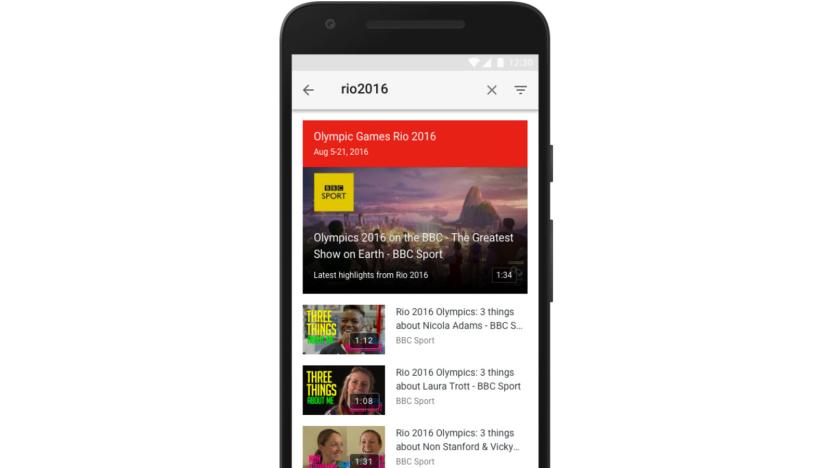
Google weaves Olympics highlight videos into your search results
Google is no stranger to providing useful info during Olympic games, but it's kicking things up a notch for Rio. The internet behemoth has teamed up with broadcasters in 60-plus countries (including America Movil, BBC and Japan's NHK) to integrate Olympics highlight videos into both Google search results and YouTube's Watch Cards. It's not the same as watching live, of course, but it could help a lot if work or time zones force you to catch up after the fact.
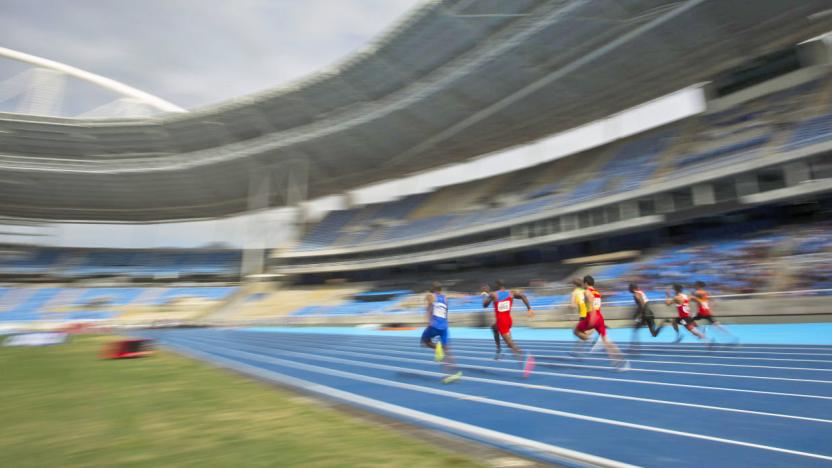
NBC will air the 2016 Rio Olympics in 4K, HDR and Atmos
NBC has announced that it will make content from this year's Olympic Games available to carriers in 4K and HDR, however there's one little catch. In a setup that will seem familiar for early HDTV adopters who still can't get Sony's "we brought chips... and salsa!" ad out of their heads 12 years later*, 4K UHD footage of the Opening and Closing Ceremonies, swimming, track and field, basketball, the men's soccer final, and judo is coming home on 24 hour tape delay. NBC will provide a downconverted version of the 8K feed Olympic Broadcasting Services and Japan's NHK are experimenting with, to 4K, and present it in HDR with Dolby Atmos surround sound audio. According to NBC Sports president Gary Zenkel, "The Olympics have been a consistent driver of technological advancements, and Rio will be no different."

Pokemon detective game with blue, talking Pikachu due in 2015
The Pokemon Company is working on a 3DS detective game with Pikachu as your partner, due out in 2015. The game was outed on Japanese channel NHK, in a program called The Professionals highlighting Pokemon CEO Tsunekaz Ishihara, as spotted by Serebii. The detective game features a rare Pikachu as the enemy, but the development team "can't see people liking it," the site says. It also stars a blue Pikachu that talks, and Pikachu is being developed with motion capture and facial recognition software. NHK posted an ad for The Professionals on October 22, showing the detective game and a clip of a motion-captured Pikachu that will haunt our quiet nights alone for years to come. Both bits were graciously giffed by TinyCartridge, if this year's haunted houses just aren't doing it for you. Pikablu, anyone?

NHK flaunts 8K Ultra HD compact broadcast camera
While you're still settling in to HDTV, NHK is already looking past 4K toward 8K broadcast trials -- and it has the hardware to do it. The Japanese broadcaster just showed off a compact 8K broadcast camera that uses the H.265 encoder we saw earlier, and packs a 33-megapixel sensor and drive circuits into a mere four square inch package. Unlike NHK's 8K, 120Hz Super Hi-Vision cam, this more compact model runs at 60fps. Broadcast trials are scheduled to begin in 2016 in Japan, regardless of whether you can see the pixels or not. Update: This post originally stated that the camera runs at 120Hz. It is actually 60fps.

Samsung, LG join forces with Korean cable companies to push UHDTV content
No matter how many 4K TVs hit shelves, without native content their appeal will likely remain limited. Samsung and LG are working to change that, at least in their home country, by announcing a memorandum of understanding with five Korean cable operators (Hyundai HCN, CJ HelloVision, C&M, CMB and T-Broad) to boost 4K TV broadcasts. We could see both live and on-demand 4K programming by the end of this year or early next year, made available via apps on smart TVs and streamed through South Korea's abundant high speed internet connections. Still not enough resolution for you? Just last week, Japan's NHK showed off the first 8K Super Hi-Vision narrative film at the Cannes Film Festival. We'll let you know when all of these developments add up to Ultra HDTV content viewable in your neck of the woods, but for now early adopters will have to make do with mostly upscaled content like Sony's Mastered in 4K 1080p Blu-ray discs.

NHK has a theoretical fix for OLED's theoretical longevity problem
Japan's National Broadcasting Corporation, NHK, reckons OLED displays don't last long enough. And they have a point, because OLED pixels that are exposed to the air can lose half of their brightness in just 100 days. Commercial products are of course protected from the elements, but they're not perfect. This is where iOLED comes in. NHK inverts the anode and cathode layers in traditional OLED configurations, hence the added "i", and then adds an additional protective coating above the cathode. The result is a display that retains its brightness even when not fully sealed from the environment. Hopefully, this sort of solution will make its way into OLED TVs by the time OLED TVs are actually affordable, but in the meantime we're expecting to hear more about NHK's technology (and maybe see it in action) at Display Week later this month.

NHK and Mitsubishi develop the first H.265 encoder for 8K video
NHK's 8K Super Hi-Vision is an extremely bandwidth-heavy format -- so much so that earlier tests used gigabit-class internet links rather than traditional TV broadcasting methods. Thankfully, both the broadcaster and Mitsubishi have developed an encoder that could keep data rates down to Earth. The unassuming metal box (above) is the first to squeeze 8K video into the extra-dense H.265 (HEVC) format, cutting the bandwidth usage in half versus H.264. Its parallel processing is quick enough to encode video in real time, too, which should please NHK and other networks producing live TV. We'll still need faster-than-usual connections (and gigantic TVs) to make 8K an everyday reality, but that goal should now be more realistic.

NHK proposes new 3D broadcast format: transmits dual images at higher resolution (video)
A technical arm of Japan's national broadcaster, NHK Media Technology, is proposing a new Advanced Stereo 3D format for broadcasting high-quality 3D content. It would be able to transmit programming to both 3D-capable TVs and standard HD sets, all while holding hands with existing broadcast standards. According to DigInfoNews, the new format is being submitted to the ARIB, which decides broadcasting standards. What's different here is that NHK would be able to offer both images in full high-definition -- independently transmitting both left and right images instead of side-by-side at a reduced resolution. The Japanese broadcaster has noted that Korean developers are working on similar tech and a compatible format between both projects could be very likely, and hopefully lay the groundwork for global take-up of the standard.

NHK demonstrates 8K 3D digital binoculars: 16x 'lossless' zoom at 1080p (hands-on)
Alongside its Super Hi-Vision TV demonstrations, Japan's national broadcaster had some 3D goggles also taking advantage of that 8K resolution. With 16 times the pixels of typical 1080p content, these prototype binoculars provide the same multiple of zoom from an 8K feed -- that is 16x zoom without losing any of original data. We got to grips with a the master model here at CEATEC, and were able to pan up and down, as well as manipulate a lever to close in on views of both Mount Fuji and Tokyo's very recent Skytree tower. NHK mentions that it could see the devices being used to show off other sightseeing spots in the future, but we don't expect home installations any time soon.

NHK 8K Super Hi-Vision camera captures native 120Hz footage, we go eyes-on at IBC (video)
We've seen plenty of 4K cameras, and we've even heard a whisper or two about 8K, but the quality of a viewing experience isn't tied only to resolution -- frame rate also comes into play, especially with fast-moving subjects. NHK's prototype Super Hi-Vision camera doubles the capture rate from the standard 60Hz to a much speedier 120Hz, yielding sharper motion. While the difference isn't noticeable with static or slow-moving scenes, it certainly comes into play when filming rapid-motion sporting events or panning the camera. The Japan Broadcasting Corporation's latest model was on hand at IBC in Amsterdam, and the advantages of a 120Hz cam were immediately crystal clear. Filming a rotating image that paired ordinary objects and cityscapes with letters and numbers, you could see the difference instantly, with the 120Hz image on the right side yielding far shaper details, while the left side was often a blurry mess. There's no software smoothing on hand here -- because the higher frequency comes directly from the source, it appears perfectly natural, and much more pleasant. We captured a video demonstrating the expo floor rig, but because our camera doesn't sport the same spec, you won't notice a difference in the hands-on clip after the break. You can see the difference in our stills gallery below, however, and you can take us on our word -- the improvement is quite dramatic.%Gallery-164700%

Panasonic's 145-inch 8K PDP eyes-on (video)
Tucked away into a dark corner of Panasonic's booth is the clear highlight of the outfit's IFA 2012 showcase: a 145-inch 8K plasma display panel. Developed in partnership with Japan's NHK, the prototype is merely a proof of concept for the broadcaster's planned 2020 launch of Super Hi Vision TV. In person, the flat screen is truly awe-inspiring, offering such richness of detail that even up-close we weren't able to discern any pixels, while colors appeared balanced and natural. Overall, the image quality -- 16 times that of regular full HD -- nearly apes the real-world images it replicates. Unfortunately, you'll have to wait sometime before this tech trickles down to the mass market level. In the meantime, content yourself with a brief video demo after the break. Follow all of our IFA 2012 coverage by heading to our event hub!

NHK developing hybrid renewable energy-powered video camera for use in disaster areas
You can always count on Japan's NHK to come up with new, exciting and innovative ways to bring us video coverage. The latest project? A wind- and solar-powered robot camera designed for situations such as natural disasters. Loaded with a 1,200 Ah battery, even if the elements don't bless it with sun and air, it can keep filming for two to three days. The combination of wind turbine and solar panels obviously allow it to generate more power than either method on its own, with the turbine reportedly generating 1 kW at 11 m/s wind speeds. A special power-saving mode prevent it draining too fast when full functionality -- such as the built-in wireless, cellular and satellite broadcasting systems aren't needed. Currently the prototype is installed on a rooftop while battery and power-generation are fully tested, but it's hoped that this could lead to further developments for disaster area broadcast equipment. Or -- here's hoping -- power-cut-proof sports coverage.

ITU approves NHK's Super Hi-Vision as 8K standard, sets the UHDTV ball rolling very slowly
We'd heard that the International Telecommunication Union was close to approving Super Hi-Vision as an Ultra High Definition TV standard, and the UN agency hasn't waited long to confirm the rumors. The recommendation to use NHK's 7,680 x 4,320 format has gone unopposed and should define the parameters for incredibly detailed 8K video worldwide. This shouldn't lead anyone to return that 4K TV just yet -- once again, it's important to remember that NHK still won't start any kind of wider testing until 2020. That's also assuming that the first 8K sets are down to Earth instead of the incredibly expensive 145-inch variety.

Nikkei: ITU near recommending NHK's Super Hi-Vision as official TV standard
We've seen NHK preparing its Super Hi-Vision 8K video since time immemorial. Wouldn't it be nice if the TV broadcast technology was more than just a perpetual research project? If sources for Japan's Nikkei aren't dreaming, the International Telecommunication Union is now "likely" to declare the format an official standard for broadcasters and TV makers. Should it go ahead, the UN telecom body would ask the world to rely on Super Hi-Vision as an eventual successor to HDTV and reduce the balkanization of TV standards that we've seen in the past. Neither the ITU nor NHK is known to have commented on the claim so far, but NHK isn't exactly in a rush to get a seal of approval from anyone -- widescale test broadcasts aren't coming until 2020, and production TVs themselves are only just entering a 4K universe.








